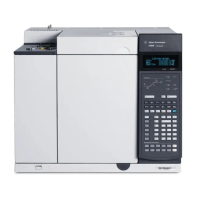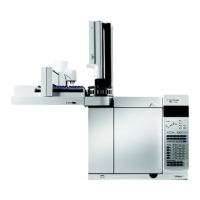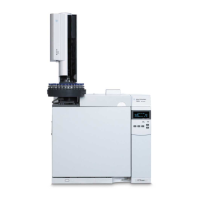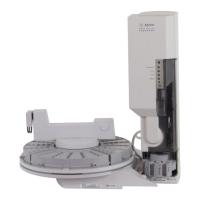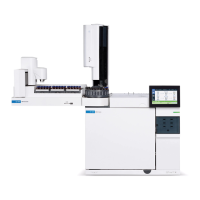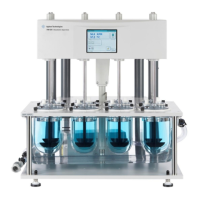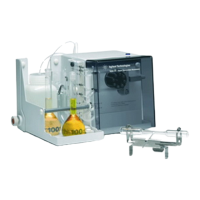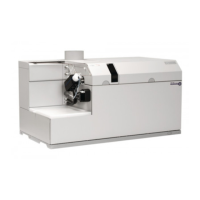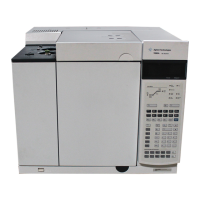
Do you have a question about the Agilent Technologies 7890 Series and is the answer not in the manual?
| Brand | Agilent Technologies |
|---|---|
| Model | 7890 Series |
| Category | Laboratory Equipment |
| Language | English |
The main title of the manual.
Identifies the specific manual part number for this document.
Lists the publication date and edition of the manual.
Denotes a hazard that could result in product damage or data loss.
Denotes a hazard that could result in personal injury or death.
Safety warnings for using hydrogen (H2) as carrier gas.
Comparison table of GC inlet types and their characteristics.
Recommended carrier gas flow rates for various column sizes.
Explanation of the gas saver feature to reduce carrier flow.
Procedure to restore GC setpoints for injection.
Information on GC heater connectors and their locations by module.
Description of the Split/Splitless inlet and its operating modes.
Explanation of the split injection mode and its pneumatics.
Explanation of the splitless injection mode and its pneumatics.
Details on pulsed split and splitless modes for the S/SL inlet.
Minimum recommended inlet total flow and operating pressures for split mode.
Guidance on choosing appropriate liners for split and splitless modes.
Tool to determine if a liner is suitable for a method.
Configuration of parameters for the S/SL inlet in split mode.
Step-by-step guide for splitless injection parameters.
Parameters for S/SL pulsed modes.
Overview of the Agilent Multimode (MMI) Inlet System and its modes.
Procedure for tightening septum retainer nuts on the MMI inlet.
Explanation of MMI temperature programming and additional ramps.
Information on cryogenic cooling options for the MMI inlet.
Minimum recommended inlet total flow and operating pressures for MMI split mode.
Guidance on choosing appropriate liners for MMI split mode.
Explanation of MMI split and pulsed split modes.
Description of MMI splitless and pulsed splitless modes.
Details on using the MMI solvent vent mode for large volume injections.
Explanation of MMI Direct Mode for on-column like behavior.
Recommended procedure to change from splitless to solvent vent mode.
Technique for concentrating analytes using multiple injections with MMI.
Introduction to the Cool On-Column Inlet and its benefits.
Importance of using retention gaps to protect the analytical column.
Information on CryoBlast and temperature control for COC inlet.
Overview of the Agilent Programmed Temperature Vaporization (PTV) Inlet System.
Description of available septum and septumless heads for the PTV inlet.
Details on PTV temperature programming and additional ramps.
Information on cooling options for the PTV inlet.
Explanation of PTV split and pulsed split modes.
Configuration of parameters for PTV split and pulsed split modes.
General description of the GC oven and its capabilities.
Safety precautions related to opening and operating the oven door.
Steps to set maximum temperature and other oven configuration parameters.
Explanation of oven temperature programming with single and multiple ramps.
Explanation of available column flow and pressure modes.
Explanation of column backflushing, its benefits, and warnings.
Information about the Nickel Catalyst Tube accessory.
Explanation of makeup gas usage and modes in GC detectors.
Description of the Flame Ionization Detector (FID) operation and components.
Description of the Thermal Conductivity Detector (TCD) operation.
Description of the micro-cell detector (uECD) and its operation.
Overview of the Nitrogen-Phosphorus Detector (NPD) and its features.
Description of the Flame Photometric Detector Plus (FPD+) operation.
Description of the Flame Photometric Detector (FPD) operation.
Explanation of GC output signals to data handling devices.
Assigning detector signals using Mode/Type and selecting signal types.
Adjusting analog signal using Zero and Range parameters.
GC digital outputs to Agilent data systems.
Correcting for rising baseline in temperature programmed analysis.
Explanation of pressure units and control modules (PCM, Aux PCM).
Configuration of auxiliary thermal zones for temperature control.
Parameters for configuring an auxiliary zone as a cryo trap.
Information on supporting auxiliary detectors like TCD and AIB.
